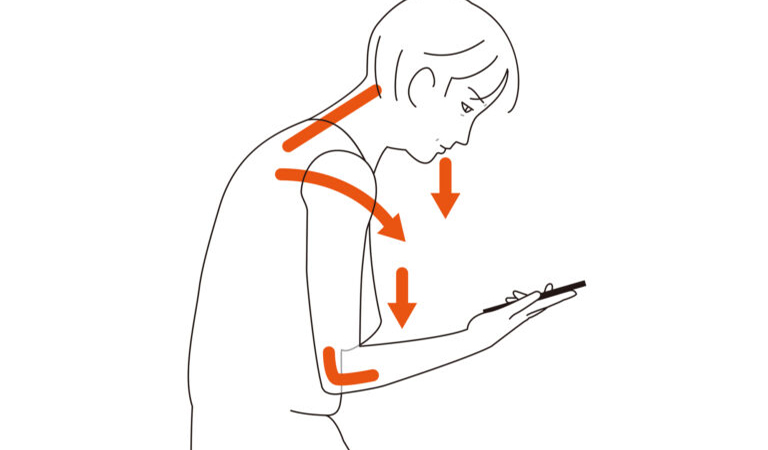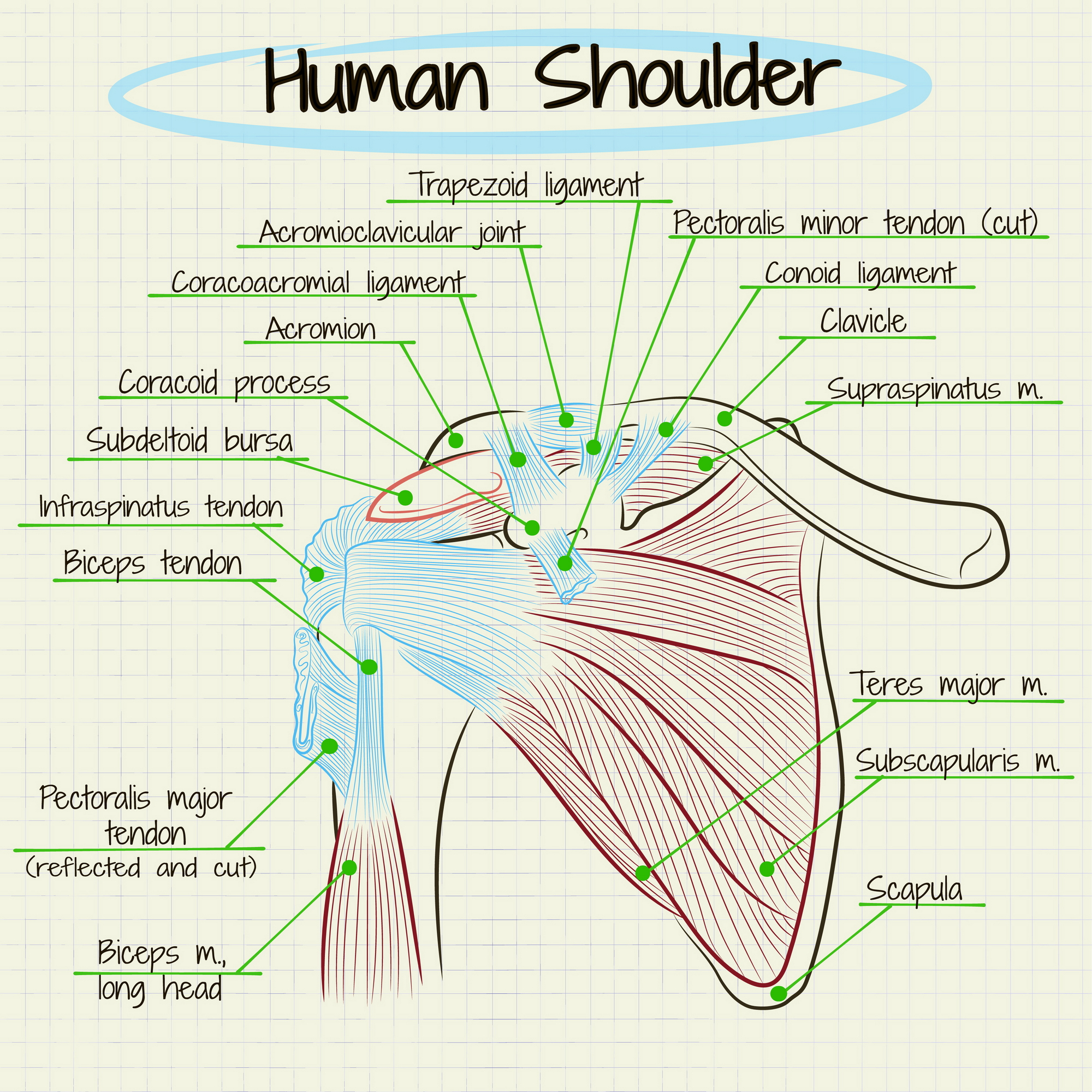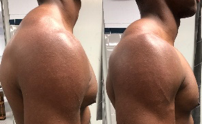
If you are looking for a fix to your chronic shoulder pain issues and you have the time to work on yourself, this is the answer you are looking for. While there are plenty of places out there that will gladly take your money in exchange for temporary relief, I would advise you that in order to fix this issue dedication, work and consistency are 100% the serum needed.
If you are in, let’s begin! We can fix your rounded shoulder.
Basic Shoulder Anatomy Explanation
The shoulder is one of the most complex joints in the body, responsible for as many as 12 different movements. We rely on the shoulder to do so much – to catch us when we fall, to throw a baseball, to lift objects overhead, and more. We need a lot of smaller muscles to work in conjunction with one another and work overtime to provide us with these motions. All these smaller muscles only have a certain amount of space to work with since the shoulder joint is so condensed. When overworked or repetitive motions occur over time, muscles/tendons will swell and those spaces get compromised. This is what causes shoulder impingement, or pain with overhead movement.

A Background on Rounded Shoulder
Whether you are a weekend warrior, professional athlete or just starting high school sports, we are all human beings. For some reason, when we were created, they thought it was a good idea to make the humeral head (ball portion of the “ball and socket joint”) much bigger than the accepting joint. I have heard of it described as a golf ball on a tee. The tee being too small for the golf ball. With that said, as human beings we do most things “in front” of us. We very rarely pull or retract our shoulders (unless you are a rower).
Over time, as we work from home slouched over at the computer, play video games, throw a baseball, or tackle a running back, your body will slowly become adapted to the stresses or demands you place on it. We see this a lot when people just want to work out the chest or other beach muscles. The pecs and anterior shoulder become overworked and tight while the back (lower traps, rhomboids, posterior deltoid) become weak and neglected.
Now going back to the golf ball on a tee image. If you dedicated all your time to one side of the golf ball and pulled it in one direction day in and day out it will begin to teeter on that side of the tee. Now imagine throwing a baseball, a football, or any type of object a track athlete throws. You might not have pain the first couple times, you might be able to pitch pain free half the year, you might be able to throw for 5,000 yards in the football season, but at some point, if you keep going in this direction you might not make it long into the future. In order to make it as long as possible the golf ball must remain flat on the tee. If this happens the shoulder joint is more functional and will last longer for the job you want to accomplish.
Rounded or Hunched Shoulders vs. Correct Posture
Quick Assessment:
Just to give you a better understanding, do something for me. You can do this while you’re sitting down. Round your shoulders. Put your arms out in front of you (thumbs up and facing the ceiling). While keeping your shoulders rounded, how far can you raise your arms up over your head? I’ll wait.
Now depress your shoulder blades (place your shoulder blades in your back pocket) and repeat the same test. Did you experience a better range of motion?
How did I get Rounded Shoulder?
- Working out the chest every day and neglecting the back (Spring Break bod)
- Too much overhead activity/throwing athlete
- Sitting at a computer
- Sleeping on side
How Do I Fix Rounded Shoulder?
Time and Dedication
It may have taken you years to obtain this poor posture, a little time each day towards fixing it is necessary.
STRETCH the following structures
- Pecs (Doorway stretch)
- Upper trap/neck muscles
- Latissimus dorsi stretch
STRENGTHEN the following structures
- Lower Traps (Prone Y’s and I’s) (Face Pulls)
- Rhomboids (Prone Packing)
How to accomplish this:
Keep in mind that this can be done while you play your sport or continue to train for whatever it is that you do.
I WOULD make it a PRIORITY to stretch or release the tight muscles (upper trap, neck flexors, anterior shoulder, pecs) first before anything, then supplement with posterior back and posterior shoulder strengthening. Once you feel as though your back or posterior shoulders are tight, and you feel/notice a different in your posture, then begin your workout. If you fail to loosen those muscles first and try to just strengthen the weaker back muscles you might be fighting against the tight muscles. The pecs and deep neck flexor muscles are so tight that they may be pulling too hard in the other direction to even obtain proper strength gains to pull your posture in the right direction.
You may not get the results you wish for right out the gate. But an expert was once a beginner. You must put the time in. If you want to learn a different language, you must study and put time in. If you want to become a professional athlete, you must put the time in. You can’t expect the be the best athlete or the smartest human being without putting time in. It takes over 10,000 hours to become an expert at something.
To talk about what specific stretches or exercises may help you the most, please reach out to one of our shoulder specialists, Dr. Bryan Butler or Dr. Christopher Donaldson.
Ricky Braun is a BOC Certified Athletic Trainer and State of Florida Licensed Athletic Trainer. He earned his bachelor’s degree from Appalachian State University before attending Nova Southeastern University where he obtained his master’s degree in health science with a concentration of athletic training. Upon graduation he decided to advance his training and experience and was selected to work as an NFL Athletic Training Intern with the Tampa Bay Buccaneers. He joined Orthopaedic Medical Group of Tampa Bay in June of 2018 and has been working as the Associate Athletic Trainer at Jesuit High School. He works with all Jesuit sports team providing daily injury assessments, treatments, injury screening and on-field emergency coverage. Full Bio





